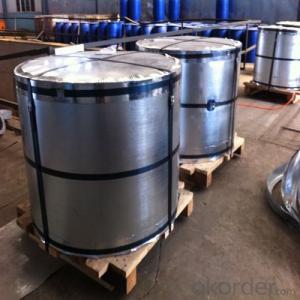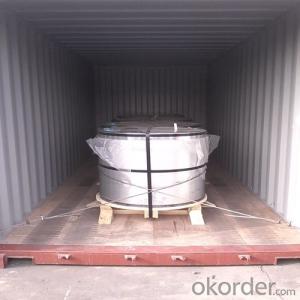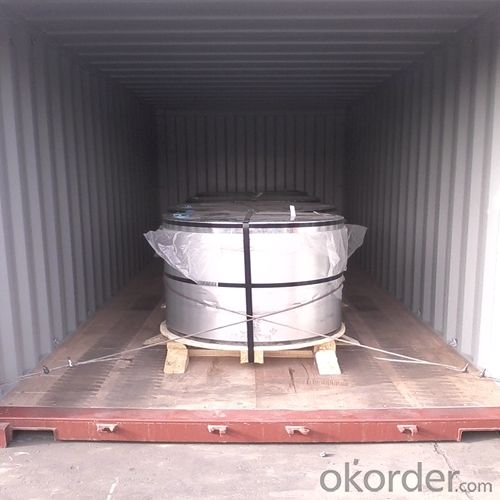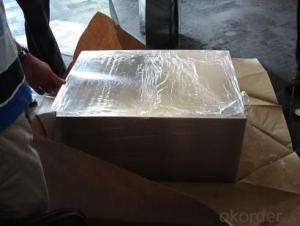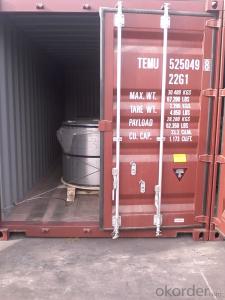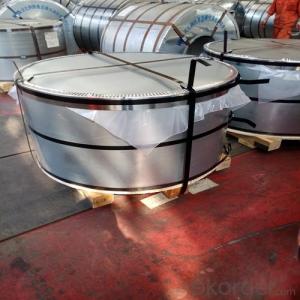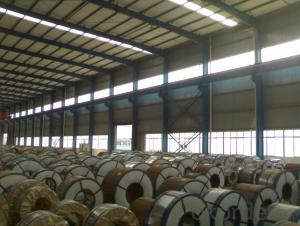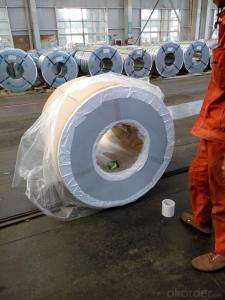Electrolytic Tinplate and TFS for Metal Package of Industrial or Chemical Useage
- Loading Port:
- Shanghai
- Payment Terms:
- TT OR LC
- Min Order Qty:
- 25 m.t.
- Supply Capability:
- 30000 m.t./month
OKorder Service Pledge
OKorder Financial Service
You Might Also Like
Specification
1.Structure of Electrolytic Tinplate and TFS for Metal Package of Industrial or Chemical Useage Description
Electrolytic Tinplate, is one thin steel sheet with a coating of tin applied by electrolytic deposition. Tinplate made by this process is essentially a sandwich in which the central core is strip steel. This core is cleaned in a pickling solution and then fed through tanks containing electrolyte, where tin is deposited on both sides. As the strip passes between high-frequency electric induction coils, it is heated so that the tin coating melts and flows to form a lustrous coat.
2.Main Features of the Electrolytic Tinplate and TFS for Metal Package of Industrial or Chemical Useage
Chromium coated
Easier to recycle.
Sulphur Blackening Resistance: TFS has sulphur resistance properties, which can be used for canning protein- rich food such as fish.
Filiform Rust Resistance: Filiform is superficial corrosion of the base metal. TFS has a superior base metal which makes it corrosion resistance.
Paint Adhesion : TFS possesses better paint adhesion properties, thus making it ideal for DRD cans and adhesive bonded cans.
Weldability: TFS can be welded when metallic coating layers are removed by edge grinding.
Internal Coating / Lacquering can be avoided in the case of TFS used to store motor oil or cooking oil.
3.Electrolytic Tinplate and TFS for Metal Package of Industrial or Chemical Useage Images
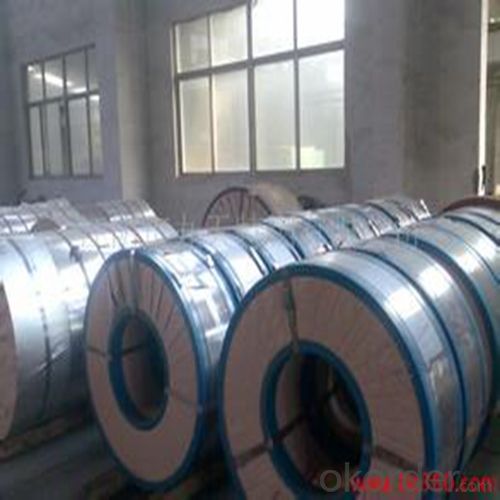
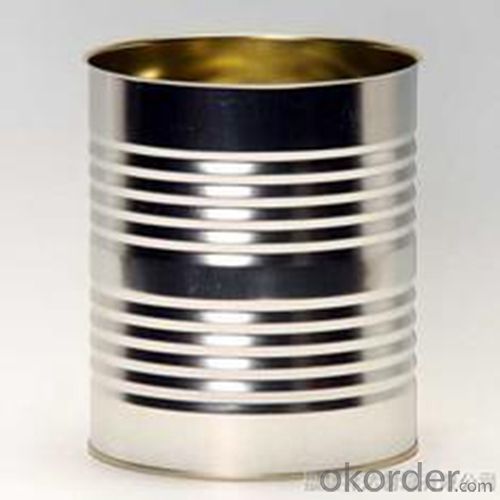
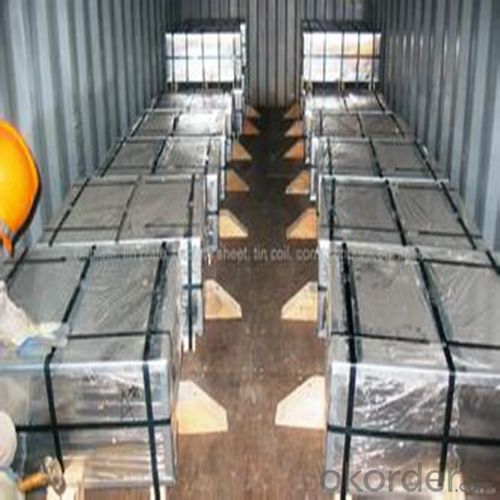
4.Electrolytic Tinplate and TFS for Metal Package of Industrial or Chemical Useage Specification
Specification of :
Standard: ISO 11949 -1995, GB/T2520-2000,JIS G3303,ASTM A623, BS EN 10202
Material: MR,SPCC
Thickness:0.15mm - 0.50mm
Width: 600mm -1150mm
Temper: T1-T5
Annealing: BA & CA
Coil Inner Diameter: 508mm
Weight: 6-10 tons/coil 1~1.7 tons/sheets bundle
Passivation:311
Oil: DOS
Surface: Finish,bright,stone,matte,silver
5.FAQ of Electrolytic Tinplate and TFS for Metal Package of Industrial or Chemical Useage
- How are the tinplates specified?
The tinplates are specified as per the steel base, extent of tempering, the coating weight, annealing method and the surface finish.
- How many types there are for base steels?
The base steels are of three types: Type MR, L, D
- Q: How is tinplate coated for electrical enclosures?
- Tinplate is commonly coated for electrical enclosures through a process called electroplating, which involves immersing the tinplate into an electrolyte solution and applying an electric current. This causes tin ions to be deposited onto the surface of the tinplate, creating a thin and protective layer of tin coating.
- Q: What is the process of two cold rolling of tinplate?
- Tinplate is commonly known as tin plated steel sheet. The English abbreviation is SPTE. It is a cold-rolled low carbon steel sheet or strip coated with commercially pure tin on both sides.
- Q: How does the tin coating affect the appearance of tinplate?
- The tin coating enhances the appearance of tinplate by giving it a shiny and reflective surface. It adds a lustrous touch to the metal, making it more visually appealing and attractive.
- Q: What are the main factors influencing the consumer preferences for tinplate packaging?
- The main factors influencing consumer preferences for tinplate packaging include its recyclability and sustainability, durability and protective properties, aesthetic appeal and branding opportunities, as well as its ability to preserve product quality and freshness.
- Q: How does tinplate perform in terms of odor resistance?
- Tinplate performs well in terms of odor resistance due to its non-reactive and impermeable nature, which prevents the absorption and transmission of odors.
- Q: Can tinplate be used for outdoor signage?
- Yes, tinplate can be used for outdoor signage. Tinplate is a durable and weather-resistant material, making it suitable for outdoor applications like signage. It is resistant to corrosion and can withstand various weather conditions, making it a reliable choice for long-lasting outdoor signage.
- Q: 0.25mm which melting point is low in tin plate and tin plate?
- Zinc plating on the surface of thin steel plates and steel strips by continuous hot dip plating prevents corrosion of the surface of thin steel plates and steel strips. Galvanized steel sheet and steel strip are widely used in machinery, light industry, construction, transportation, chemical industry, post and telecommunications and other industries
- Q: How does tinplate compare to aluminum packaging?
- Tinplate and aluminum packaging have their own set of advantages and disadvantages. Tinplate is generally more affordable and has good corrosion resistance, but it is heavier and less malleable than aluminum. On the other hand, aluminum is lightweight, highly malleable, and offers excellent barrier properties, but it is more expensive and can be prone to corrosion. Ultimately, the choice between tinplate and aluminum packaging depends on specific requirements such as cost, durability, and desired aesthetics.
- Q: What are the typical production volumes for tinplate?
- The typical production volumes for tinplate vary depending on market demand and specific manufacturing capabilities. However, on a global scale, millions of metric tons of tinplate are produced each year to meet the needs of various industries such as packaging, automotive, electronics, and construction.
- Q: What are the main challenges in tinplate manufacturing?
- Some of the main challenges in tinplate manufacturing include ensuring consistent quality and uniform coating thickness, managing the complex process of tin coating application, minimizing production costs without compromising product integrity, and meeting environmental regulations related to waste disposal and emissions control. Additionally, maintaining efficient supply chain management and addressing the increasing demand for sustainable packaging solutions are also significant challenges in tinplate manufacturing.
Send your message to us
Electrolytic Tinplate and TFS for Metal Package of Industrial or Chemical Useage
- Loading Port:
- Shanghai
- Payment Terms:
- TT OR LC
- Min Order Qty:
- 25 m.t.
- Supply Capability:
- 30000 m.t./month
OKorder Service Pledge
OKorder Financial Service
Similar products
Hot products
Hot Searches
Related keywords
